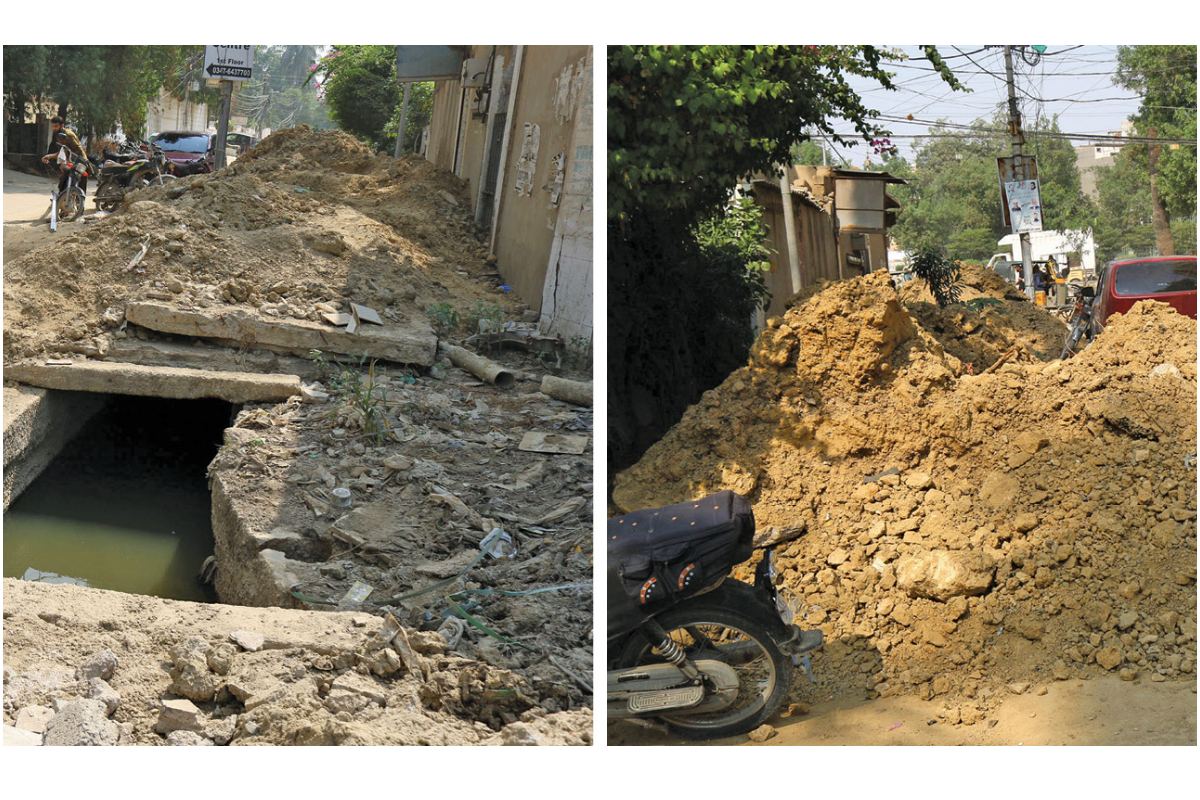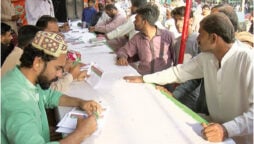
In a bind
KMC’s media director reveals the corporation’s complex predicament
KARACHI: The Sindh government has given the Karachi Metropolitan Corporation (KMC) Rs 1.5 billion to repair and construct roads damaged during the monsoon rains in the city, and the corporation claims to have repaired the majority of the city’s roads.
According to Ali Hasan Sajid, Director, Media Management Department, KMC, the city is governed by 17 different institutions, including six cantonment boards, the Malir Development Authority (MDA), the Defense Housing Authority (DHA), the Lyari Development Authority (LDA), the Karachi Development Authority (KDA), the CAA, Karachi Port Trust (KPT), the Railways, the National Highway Authority (NHA), and seven district municipal corporations, in addition to various societies.
“The KMC is only responsible for 106 major roads in the city, and we have repaired Sharah-e-Liaquat, University Road from Safoora Goth, Sharah-e-Noor Jehan, and Habib Rehmatullah Road, and work on the remaining roads damaged by the rains is ongoing,” the director said.
As far as roads in PECH are concerned, he said, “The KMC is only responsible for Sharah-e-Fiasal and Shahrah-e-Quideen; it has nothing to do with other roads in the society, while the District Municipal Corporation (DMC) East is responsible for the repair of those roads; you cannot blame the KMC for every damaged road in the city.”
When asked whether DMCs were under the umbrella of the KMC, Ali Hasan Sajid replied, “DMCs are independent institutions with their own budgets.”
In response to another question about why DMCs were not working under the command of the KMC, he stated that some amendments would be introduced soon in this regard, but for the time being, the DMCs were working independently.
He said that the administrator formed an independent committee to inspect the completed roads, and if the committee members were satisfied, the work would be considered completed.
Parks
Similarly, he noted that the KMC is in charge of 46 major parks in the city; parks smaller than one acre are not under the corporation’s jurisdiction. “If a park is less than an acre in size, it is the responsibility of the DMC in question. Bagh-e-Ibne Qasim, Polo Ground, Gulshan-e-Jinnah, Sir Syed Park, Taleemi Bagh, Aziz Bhatti Park, Hill Park, and Kidney Hill are among the large parks we manage.”
He clarified that most people assumed that all of the parks in the city belonged to the KMC, which was in charge of maintaining them. “This is not true; for example, Nisar Shaheed Park is the DHA’s responsibility, not the KMC’s; we only maintain 46 parks and the green belt along the 106 major roads that belong to the KMC,” he added.
He claimed that park entrance fees ranged from Rs 5 to Rs 20, but that with such a small sum, the parks could not be maintained. According to Ali Hasan Sajid, a lack of funds had a negative impact on the maintenance process of those parks because the trees and plants would die if they were not cared for.
Graveyards
The KMC’s director of media management further said, “There are more than 200 graveyards in the city, of which the KMC has only 38. The rest of the graveyards are cared for by communities or societies. Six of the 38 graveyards have been declared closed, and two new ones, one near the Northern Bypass and one in Surjani Town, are yet to open for burials.”
He stated that the KMC owned 30 graveyards in the city that were operational and where burials were being performed. The burial fee was Rs 9,000, and the KMC had yet to begin collecting fees at the new proposed rate of Rs 14,300. Every day, 50 to 60 people were buried at those 30 sites. “The gravediggers are mostly daily wagers, and the KMC pays them for their time. Look at it this way: the charges for digging the grave, the labour charges of the gravediggers, the charges for concrete slabs, and the fee for issuing a death certificate are all included in the Rs 9,000.”
After expenses are met, the KMC receives Rs 300 out of Rs 9,000, and graveyards cannot be properly maintained with such a meagre amount of funds. “In reality, the KMC is providing a service rather than minting money,” he added.
When asked if the gravediggers demanded burial fees ranging from Rs 25,000 to more than Rs 100,000, he said, “When a family member dies, the members become sensitive, and if their mother, father, or any relative is buried in a cemetery, they demand that a new grave be built beside the old one. If the gravedigger refuses, the family makes a generous offer. This happens almost every day.”
Funds
The KMC’s total budget for fiscal years 2022–2023 was more than Rs 22 billion. The Sindh government provides funding to the KMC, and the corporation generates a small amount of revenue. “The KMC has 14,000 employees, and the corporation faces an Rs 40 million monthly deficit after disbursement of monthly salaries,” the director explained. “The KMC frequently requests grant funds from the provincial government to pay utility bills, office maintenance expenditures, and so on,” Ali Hasan Sajid added.
Tax collection
In reference to the tax collection through a private utility that was halted by the Sindh High Court (SHC), he stated, “Murtaza Wahab, the administrator, reduced the tax from a maximum of Rs 7,000 to a range of Rs 50 to Rs 300. This is not a new tax, and the KMC could collect Rs 3.5 billion annually through this, which would be a significant amount to maintain parks, repair roads, and initiate new projects in the city.”
When asked about delegating tax collection to a private utility, he questioned why Pakistan Television (PTV) was collecting taxes through electricity bills and even from mosques and other religious institutions where there was no television. PTV was also a government entity that had delegated tax collection to a private organisation.
Pensions
“We have been confronted with a severe lack of funds to clear the backlog of pensioners because the KMC has not paid the arrears of pensioners from grades 1 to 20 since 2016, which have now accumulated to seven billion rupees,” said the official, adding, “The administrator has requested a bailout package from the Sindh government, which has been approved by the cabinet and is worth approximately Rs 3.5 billion. The arrears include retired employees’ gratuity, leave encashment, and provident funds, while the KMC has been paying their monthly pensions.”
Ali Hasan Sajid stated that KMC would be able to clear the backlog of pensioners who retired between 2016 and 2020, if it received the bailout package from the provincial government. He further said that hundreds of employees were retiring after reaching retirement age, as they were appointed during the Mayor Abdul Sattar Afghani era and later during the tenure of Mayor Dr Farooq Sattar. Back then, appointments were made on a large scale, and those employees were now approaching retirement age. According to the KMC’s director of media management, “Because new appointments are not being made to replace retiring officials, seats in various departments of the corporation are vacant. The corporation’s performance is suffering as a result of the current staff shortage.”
Catch all the National Nerve News, Breaking News Event and Latest News Updates on The BOL News
Download The BOL News App to get the Daily News Update & Live News.












 Read the complete story text.
Read the complete story text. Listen to audio of the story.
Listen to audio of the story.